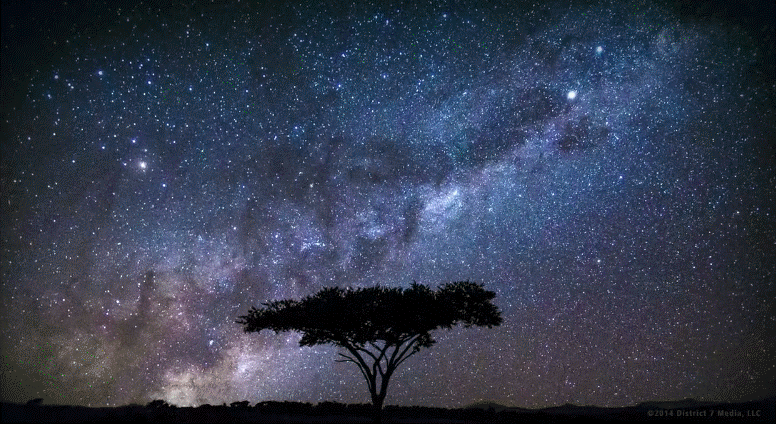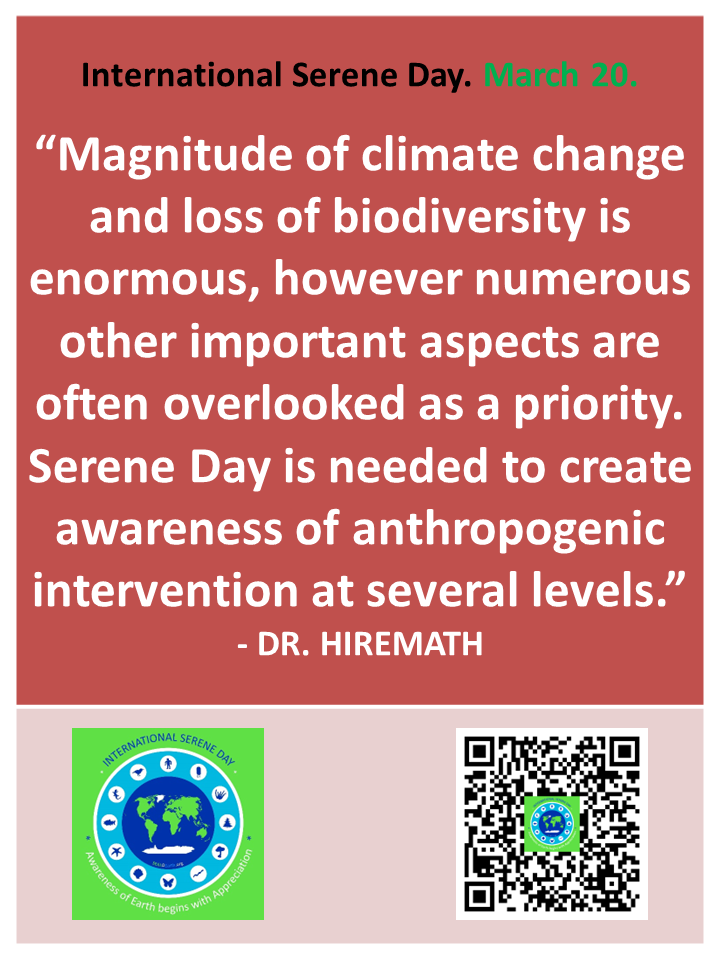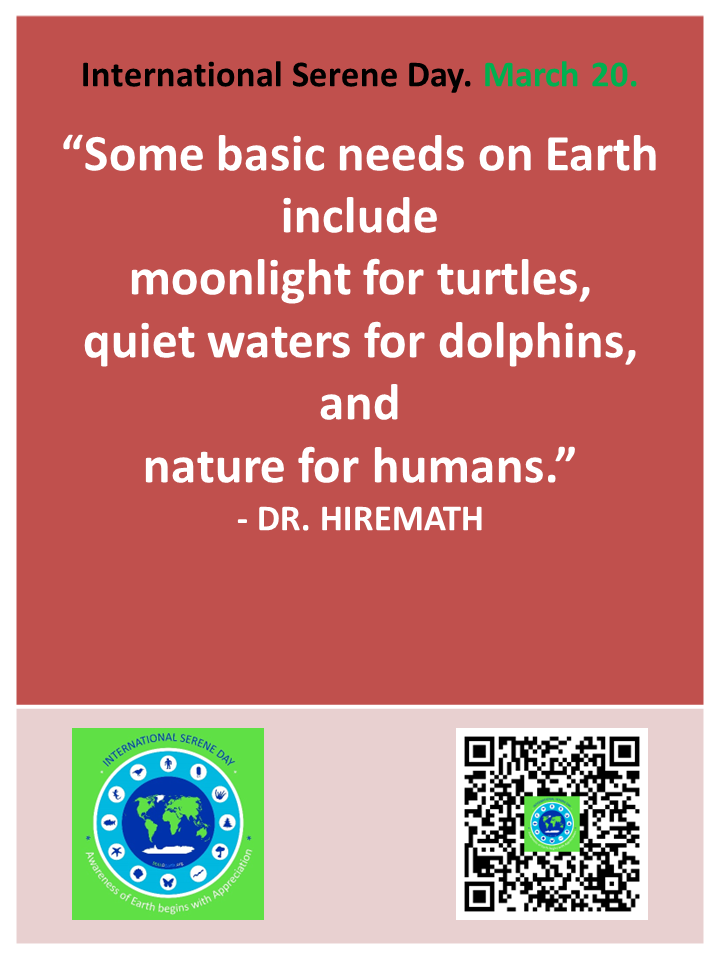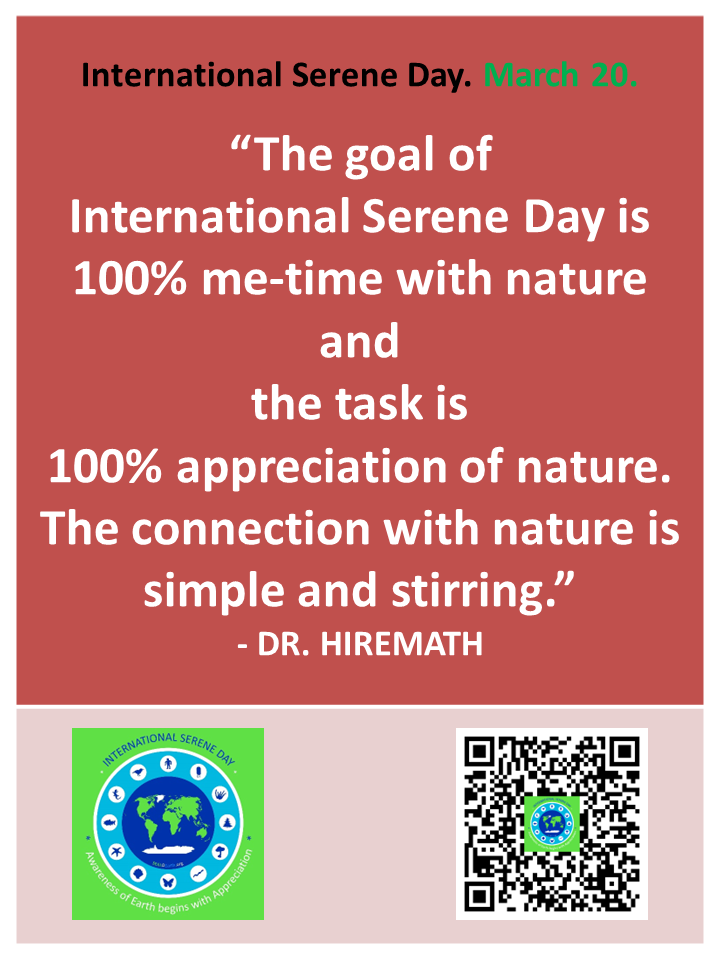2023_ISD_Awareness.jpg)
2023_ISD_Awareness.jpg)
|
International Serene Day
|
Latest News
March 20, 2024 (Wednesday) Volunteers needed around the world!
|
Observing International Serene Day
The International Serene Day (ISD) is proposed to be an annual event held on March 20th, coinciding with the first day of spring. This initiative was introduced during the 2022 United Nations General Assembly. The spring equinox, symbolizing renewal and growth, holds global significance as a day of new beginnings.
Origins and Proposal

The idea of an annual Serene Day on March 20th was initially put forth by Dr. Chaitanya Hiremath, the founder and president of SEALOEarth. This proposal was made during his address to the United Nations in 2022, specifically during the Interactive Dialogue of the General Assembly focused on Harmony with Nature in Commemoration of International Mother Earth Day. (video)
Second address at the UN General Assembly on April 24, 2023
Progress of the UN Sustainable Development Goals
Following four years of promoting the 17 Sustainable Development Goals (SDGs) established in 2015 in Addis Ababa, a series of five reports evaluating the progress of these goals were released in the summer of 2019. Based on these reports, the Basel Institute of Commons and Economics compiled a summary outlining the prioritized goals and those that were not adequately addressed. The assessment revealed that Climate and Health were ranked highly, while Biodiversity on Land and below Water ranked the lowest. (report)
Importance of International Serene Day
While the enormity of climate change and biodiversity loss is widely acknowledged, other critical aspects often remain overlooked as priorities. It is imperative to instill a sense of pride and appreciation for our unique planet, recognizing that mere intent and determination are insufficient to restore its tranquility. With the well-being of Earth's inhabitants in mind, the Serene Day seeks to raise awareness about human intervention across various levels, encompassing areas like air, water, land, light, sound, thermal, nuclear, and space. The International Serene Day (ISD) serves as an occasion for humanity to marvel at nature's beauty and the splendor of life surrounding us.
Human Impact on Natural Processes
Anthropogenic intervention refers to human activities as the primary catalyst for changes in natural processes. While air, water, and land pollution are widely acknowledged, there are also lesser-known interventions:
Benefits of Nature Exposure
Engaging in Activities
Embrace the inaugural day of spring in the 21st century with a blend of elegance and contemplation of the natural world.

|
AGE-RELATED Here are activities tailored to different age groups, allowing everyone to celebrate International Serene Day in a way that suits their interests and capabilities. For Children
For Teens
For Adults
|
|
PLAN FOR THE DAY Planning a meaningful and serene International Serene Day can be a wonderful way to connect with nature and promote a sense of tranquility. Here's a comprehensive plan for the day:. Morning: Embrace Nature
Lunch: Picnic in the Park
Evening: Reflect and Share
Late Evening: Silent Reflection
This plan provides a balanced mix of outdoor activities, mindfulness, creativity, and community engagement to promote a deeper connection with nature and a sense of serenity. |
|
AROUND THE WORLD Celebrating International Serene Day at various levels, from local to international, can help raise awareness about the importance of nature and tranquility. Here's a comprehensive plan for each level of celebration: Local Level 1. Community Nature Festival (Location: Local Park)
State Level 2. Statewide Serenity Trail
National Level 3. National Nature Appreciation Day
4. Global Serene Summit Location: TBD (United Nations would be ideal!) Day-Long Event (9:00 AM - 5:00 PM): Invite representatives from member nations to a summit focused on global environmental challenges and the promotion of serenity and tranquility worldwide.
|
|
SERENITY PLEDGE: FOR A PEACEFUL AND SUSTAINABLE WORLD Summary Sign the petition to advocate for the Serenity Pledge and support International Serene Day, fostering global harmony, mindfulness, and environmental stewardship for a more peaceful and sustainable world. Introduction We, the undersigned, firmly believe in the transformative power of serenity to forge a world that is not only peaceful but also sustainable. The Serenity Pledge symbolizes a profound commitment, embraced by individuals, organizations, and nations alike, to champion the principles of serenity, tranquility, and environmental well-being. This pledge involves a set of concrete actions and objectives dedicated to environmental preservation, mindfulness, and the pursuit of sustainable living. Its essence lies in cultivating a collective consciousness, inspiring us to coexist harmoniously with our natural world. Problem While our focus often gravitates towards the monumental challenges of our time, such as climate change and the loss of biodiversity, we must also recognize and address equally significant concerns that operate beyond the immediate spotlight. These issues encompass the pollution of our air, water, and land, the encroachment of artificial light and sound into our pristine environments, the intricate dilemmas posed by thermal and nuclear pollution, and the escalating problem of space debris. These lesser-known yet profoundly impactful threats directly affect the serenity of our planet. For instance, regular unthreatened sea turtle hatchlings instinctively move toward the brightest light, preferably moonlight, often disorienting them due to artificial illumination, leading to numerous hatchling deaths and posing a significant conservation challenge. Solution It is in response to these pressing concerns that the concept of International Serene Day was born, celebrated annually on March 20th. Initially proposed at the United Nations in 2022, this day has gained global traction as a platform for championing serenity, environmental consciousness, and mindfulness. It envisions a moment when individuals from diverse backgrounds unite to celebrate the natural world, contemplate our shared responsibilities towards the environment, and partake in actions that nurture tranquility and sustainability. The juxtaposition of International Serene Day (March 20) with International Mother Earth Day (April 22) creates a valuable appreciation-awareness month, wholly dedicated to comprehensively addressing the multifaceted challenges that our cherished planet, Earth, confronts. The Serenity Pledge, thoughtfully crafted by SEALOEarth, embodies the fundamental principles of harmony, mindfulness, and environmental stewardship. Those who take this pledge, whether individuals or communities, commit to making conscious choices that foster peace, sustainability, and a brighter future for all living beings on Earth. Pledge We wholeheartedly invite you to join us in signing this petition, endorsing the worldwide adoption and promotion of the Serenity Pledge. Your signature signifies your unwavering dedication to the following principles:
Impact By signing this petition, you send a resounding message to leaders, policymakers, and individuals worldwide, urging them to prioritize serenity, sustainability, and peace. We call upon governments, organizations, and individuals to champion the Serenity Pledge, fostering its widespread adoption and wholehearted embrace. To delve deeper into the Serenity Pledge and become part of a global movement striving for a more serene and sustainable world, kindly visit the official website: International Serene Day Let us unite and be the agents of change. Sign this petition and champion the Serenity Pledge, leading us towards a future that is brighter, more peaceful, and profoundly sustainable. [https://www.change.org/SerenityPledge] Thank you. |
Outreach


Restaurants
We are grateful to the restaurants that have honored ISD by providing a "candlelight experience" when customers mention 'Serene Day'. This will put a spotlight on light pollution. Baby turtles will thank you!
Awareness
Quotes





Contact
For questions and information, please contact via email: info(at)sealoearth.org
|
SEALOEarth endeavors to bring together not just the global human community but the entire tapestry of life itself, all in pursuit of a brighter future for our exquisite and unparalleled planet, Earth.
|
|
Visitor:
|
|